Kayaks: varieties, best models and selection criteria

A number of people have an interesting hobby - boating. It can be an integral part of fishing or just an original leisure activity that allows you to have a good rest from the bustle of the city, gain strength and just get a lot of pleasant emotions and impressions. But there are different types of boats. One of them is a kayak, which is usually used for sports purposes. Let's try to figure out what it is, how it differs from a kayak, what it is and what it is made of.
What it is?
The kayak is a small long boat equipped with oars, which has recently been quite actively used for family walks, in tourism, water sports, and fishing. Kayaks, in fact, are a modernized version of models that were actively used in antiquity - canoes. Today's kayaks are made from a variety of materials. Most often - multilayer plastic, composite materials, plywood, duralumin. They can be of different types: monolithic, inflatable, frame. They are also divided into groups according to the number of seats: single, double and triple.




Note that traditionally, this category of boats is controlled with special supports for the back, knees and feet, as well as two-bladed oars. Beginners will first have to learn how to manage such vehicles, which is not as easy as it might seem at first glance. And only then you can use the kayak. Otherwise, it can happen that, instead of sailing in the right direction, it starts spinning in one place or even rolls over. But first, of course, you should choose the right version of such a boat.
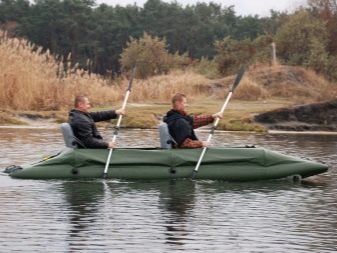

Comparison with a kayak
Now let's try to figure out what is the difference between a kayak and a kayak. It seems to many that this is the same thing, but in fact they have quite serious differences.
It is believed that kayaks were invented by the Eskimos, who assembled these small boats, designed for one rower, from bones and covered with animal skins to go hunting. A kayak differs from a kayak in that it can be single or double and can be equipped with a folding seat for children. And the kayaks were made by the Aleuts and were made of wood. And they could transport up to 6 people at a time.
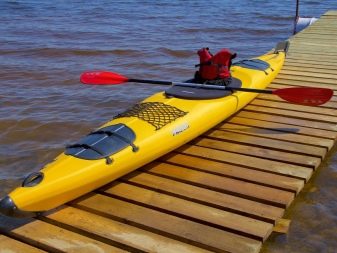

Now in production single, double and triple boat of this type. There is also a 4-seater model on the market, which can be equipped with a cargo compartment, an airtight hatch, as well as various devices to make the pastime as comfortable as possible. Usually such boats are used in various competitions. Besides, kayaks differ from kayaks in larger dimensions, higher speed. But their agility will be significantly lower.
On kayaks it is easy to climb into some deaf parts of the reservoirs and catch fish yourself. But kayaks are more suitable for family vacations and trips for many days with overnight stays. Kayaks can carry a lot of luggage.



Kinds
If we talk about the types of kayaks, then it should be said that they come in various types and categories. For example, a kayak can be collapsible, solid cast, frame, inflatable, and so on. Now let's talk a little more about each category.
A collapsible kayak is a more advanced version of the ancient northern kayaks. They have a body and a frame that is covered with a shell. The components of the frame are pillers, fasteners, bulwarks, frames, stringers, keelson, stems, fenders.
All of them are made of duralumin or strong plastic. This ensures the rigidity of the body.
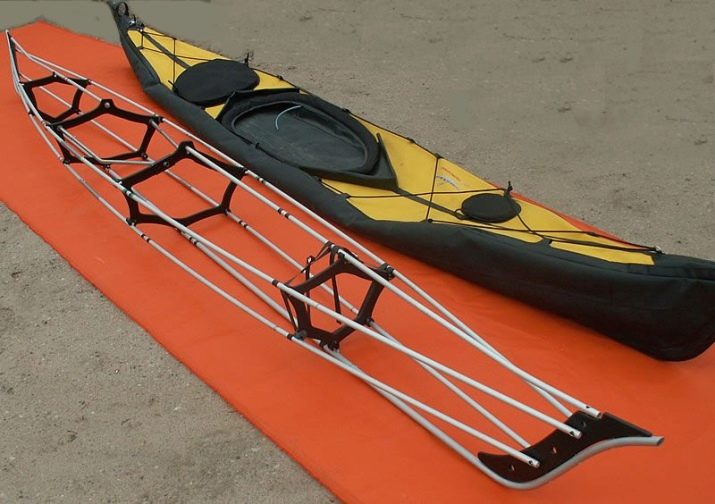
Such solutions are usually complemented by various technical devices to improve the performance of the kayak and ease of use. The boat shell usually completely covers their top, while leaving open parts to accommodate the seats that form the cockpit.
A frame kayak, or as it is also called a “folding kayak”, is the most convenient solution for cargo placement and long-distance voyages. In a disassembled state, such a boat can lie somewhere in the corner of the room. And you can deliver it to the reservoir by ordinary transport and collect it in 40 minutes.

If speak about cast analogs, then they are made of strong plastic, polyethylene, as well as high-strength composite-type materials. They are distinguished by durability and the highest strength. Such boats can be called "indestructible", which is why they are used for rafting on rivers of the highest difficulty and rowing slalom.

The most popular among this category of models will be polyethylene. They have a small mass and good maintainability.Such a boat is extremely light and can be touristic, with a motor, with a pedal drive to the propeller, with a transom, and be supplemented with steering. There is also a fishing version of such a boat, as well as sea boats.
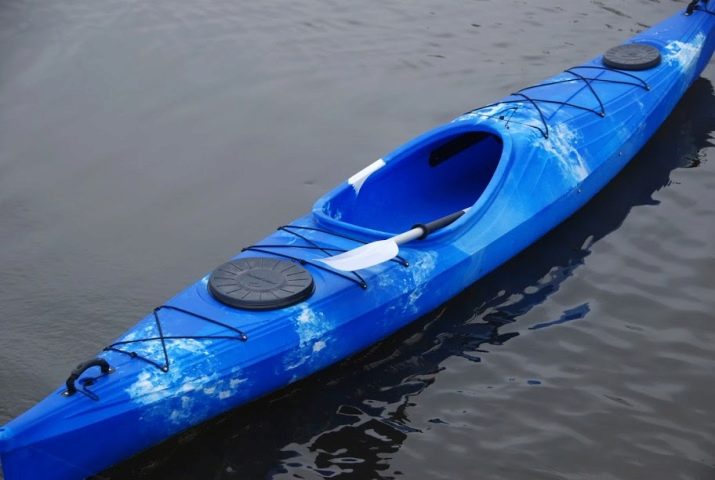
Kayaks with a cast body will perfectly glide through the water, pick up speed, withstand impacts and the influence of an aggressive environment, as well as sudden changes in temperature.
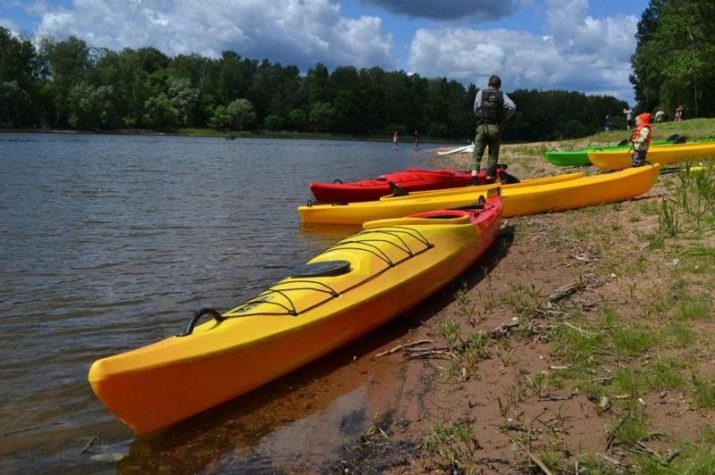
Inflatable models are somewhat similar to inflatable boats, but they are not made of rubberized fabric, but of dense PVC material, which consists of a large number of layers. Cylinders of such models can be inflated up to 3 atmospheres, which gives them high rigidity and excellent speed characteristics.
Inflatable models, which are produced in our time, are made using the latest welding and seam gluing techniques, which allows you to create different shapes of balloons and change kayak lines. They may have an inflatable bottom that protrudes downward. Often it is reinforced with liners, luggage compartments.

Inflatable models are very light and can be transported over land without any difficulty. They are preferred in some long-distance voyages, which involve visiting hard-to-reach areas and places.
The most modern inflatable kayaks can withstand powerful impacts, extreme temperature fluctuations, as well as the influence of aggressive environments. They may have pedal-driven propeller steering with a low power motor. In general, they are suitable for use in any weather.
Among these kayaks there are also models with a rather non-standard shape of cylinders, the cross section of which forms a figure-eight, and sides that are curved in length. Such models have a low windage and perfectly keep their course on a high wave.Usually they are used for swimming in freshwater and marine areas.

Inflatable frame models were created in order to lighten frame kayaks and make them more buoyant and suitable for white water rafting. Such models have a frame, a shell and inflatable elements that are located between the frame and the skin. Previously, the cylinders were simply put into the shell, but now they are, as it were, integrated into it. Such boats are extremely mobile, maneuverable, agile and easy to manage.

If such a boat gets damaged, then it can be repaired very quickly by gluing patches. In the latest models of such kayaks, 2 cylinders are usually used, which are separated by a sealed membrane. Such a design will be practically unsinkable, since upon receipt of some kind of hole, the boat will stay afloat thanks to three other compartments.
Such kayaks can be used for rafting, fishing, expeditions, hunting, tourist trips. When disassembled, it can fit in a small backpack, and it is assembled in a maximum of 20 minutes.

Besides, kayaks can be divided into groups according to the area of use. According to this criterion, they can be sea, fishing, rafting, tourist, sports. Sea kayaks have a keeled bottom, as well as a sharp, slightly raised stern with a bow. They are complemented by stegs, which provide directional stability in headwinds and waves.
Fishing options have rod holders, fish finder mounts and swivel panels. Sports analogues have a streamlined narrow shape and are made of composite-type materials.Tourist kayaks have spacious compartments for luggage, hatches for transporting small items, as well as bottle holders. Their distinctive features are smooth contours and a flat bottom.


materials
Previously, kayak-type boats were made of wood. Then, after the invention of appropriate materials, plastic models and PVC boats appeared. If we are talking about collapsible boats, then the frames there are made of metal light alloys, as well as some wooden elements and foam.
The coating is usually made of durable waterproof material - "oxford", cordura or PVC fabrics of various types. Note that PVC fabrics are used in inflatable kayaks, and some of the rigid elements are made from other special materials: foam, rubber, and so on. Non-separable models are made of carbon fiber and plastic. The properties of these materials make the kayaks very resistant to wear.


Dimensions
It should be said that the dimensions and dimensions of the boat will directly affect such characteristics as carrying capacity, handling and speed. The wider the bottom and the shorter the length, the higher the stability of the boat, but the speed will decrease. The longer and narrower the boat, the more speed it can develop, but then the kayak will be too mobile. If the boat is short, then such a model is only suitable for strong currents and extreme rafting.


Consider the dimensions of a conventional modern double kayak so that you can roughly understand what dimensions it has and judge its characteristics. The length of such a model is usually from 4.5 to 6 meters. The width will be from 60 centimeters to 1 meter. Height - from 25 to 40 centimeters, and draft - from 10 to 20 centimeters.
Manufacturer rating
A small rating of kayak manufacturers will help you make the best decision in a particular segment. Separately, it should be said about inflatable kayaks, as well as tourist and sports ones.
If we talk about the latter, then they are made of composite materials or durable plastic and are non-separable. The Nelo models are considered the best, which are shaped like an arrow. They are usually used to participate in international competitions. They are made of Kevlar and are sometimes used for high difficulty river rafting.
Popular sports kayaks are ECSI. They are also used for training and competition. They are made of Kevlar-coated fiberglass.
They are made using the vacuum forming method and have high rigidity and strength.
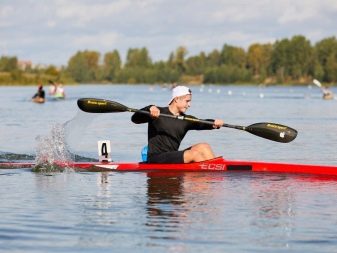

Interesting kayaks are brought to the market under the brand Plastex. This category of kayaks is designed for a marathon or sprint. They are made from epoxy reinforced with fiberglass and Kevlar fabric. Products are characterized by the ability to withstand severe impacts, accelerate quickly, have high ductility and are quite durable.

Plastic models are most often non-separable. They are distinguished by high strength, durability, good security system and resistance to damage. To date, the best model in this segment is Malibu II XL Sky 2. It is made of environmentally friendly plastic of the highest strength. It features a comfortable design, a raised nose and an oval slug. This model will be a great solution for travel.

Another interesting model from this segment - Pungo 120. It is made of lightweight polyethylene and can accelerate quickly.This model is designed for traveling on calm waters, but can also be used on rivers of medium difficulty.
It is light in weight and has excellent maintainability.

Model from the same category - Wilderness Northstar. It is made of multilayer polyethylene and is intended for family walks, as well as long trips. The kayak has large luggage compartments, steering and an additional seat for the child.

The latest model from this segment - perception expression. It is more suitable for sea travel. This transparent model from the English company of the same name is considered one of the best. Equipped with zonal comfort seats, large sealed chambers. It has a small weight and dimensions.
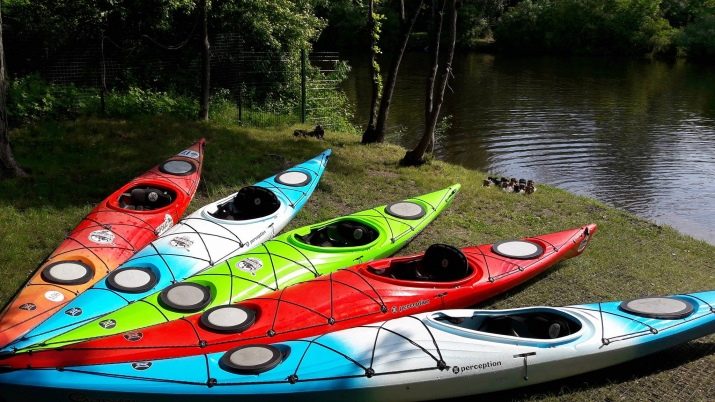
If we talk about inflatable models, they are the most affordable and easy to use. The most popular is a kayak called "Pike", made by domestic design bureau "Stalker". It is very light and cheap - much more affordable than other inflatable models. At the same time, it is also made of high-strength cord materials. This model can gain excellent speed, has a small draft and good vertical flexibility.
All this gives her the opportunity to perfectly pass through shallow water and allows her not to receive damage when landing with a lag on stones. Another distinguishing feature is sustainability.

The second model from this category, which can be called successful, is "Neva". It has a PVC body and is available for two or three people. Designed for fishing and walking.
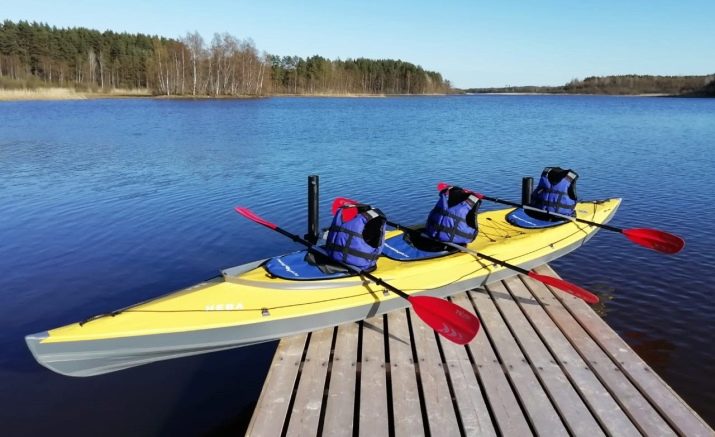
A model that deserves attention - Viking. She has an excellent carrying capacity, has 6 sealed compartments, can carry up to 3 people and has a mass of only 17 kilograms.

An interesting model "Ladoga". Suitable for long distance sailing. It has roomy luggage compartments, is easy to steer, can reach good speed and holds its course well on the waves in the wind. It has unsinkability tanks and a pedal-operated steering wheel.

Noteworthy kayak - legor. It is lightweight and extremely easy to assemble. When folded it is very easy to transport. Designed for sailing in calm waters.

If we talk about the products of foreign manufacturers, then the best will be products from the company Sevirol. They are made of fiberglass mesh, which is covered with polyvinyl chloride. They are also equipped with inflatable pillows.
How to choose?
When choosing a kayak, first of all, you should understand why it is chosen. One model is suitable for fishing, and another will be suitable for hunting. If you need an inconspicuous kayak, then it should not be red. In general, there are many moments. Let's try to describe the main ones.
So, The first criterion that is important for selection is size. This will seriously affect speed, payload and handling. Improving stability leads to a decrease in speed. If the model is narrow and long, then good speed will develop, but the kayak will be extremely mobile.

The second criterion is sustainability. The higher it is, the better the boat can withstand external influences and return to a straight position. This aspect is influenced by the center of gravity and the shape of the part that is under water. It is better that it be rectangular. Inflatable kayaks have the best stability.

The third characteristic that influences the choice of a kayak is propulsion. This parameter will be affected by the resistance of the shape of the vessel and water, as well as the wavelength. Therefore, a good inflatable kayak should not have a sharp bow waterline, which will not make it too fast. The longer the product, the faster it will be.
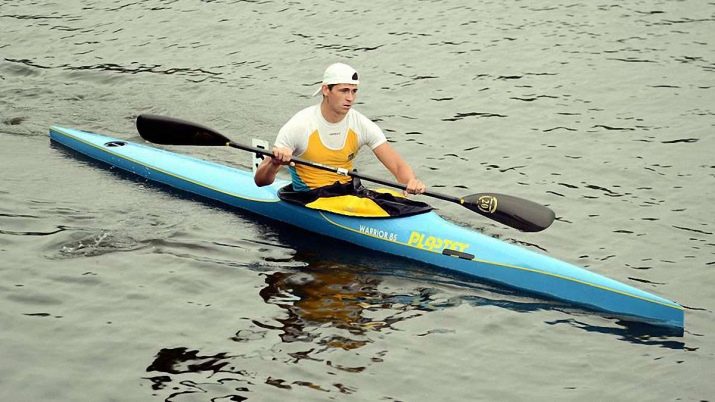
Another important detail is controllability.. According to this parameter, a long model will be of better quality, but it will be more difficult to deploy than a short one. This will be maneuverable, but it will be more difficult to keep the balance here, as well as the course.
Unsinkability will also be an important criterion. This characteristic is of particular importance on long journeys. In this aspect, inflatable kayaks will be the best, and frame kayaks will be the worst.
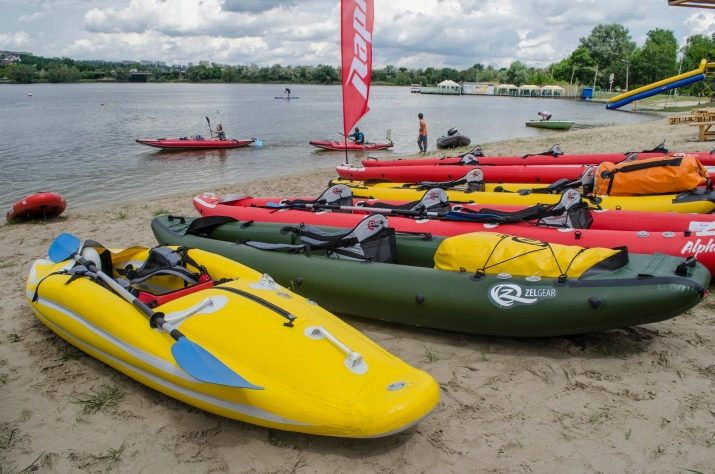
In addition, it will be important maintainability. In this case, an inflatable boat will be the most practical, because it is repaired simply and quickly, and it is almost impossible to damage it on the water. Frame analogues are sensitive to the physical effects of various physical factors. And plastic models can be damaged from any strong blows.
An important selection factor will be the material from which the kayak is made. Now the most common are plastic, PVC fabrics, metal, carbon fiber. The use of such materials can significantly increase the wear resistance of such a boat.

An equally important point will be the complexity of the kayak assembly process. Experienced people usually get through this in about an hour if they're doing it for the first time. Naturally, the more often you do it, the faster it will turn out. The average assembly time for any kayak is 40 minutes. If we talk about an inflatable one, then 15 minutes. Plastic ones are inconvenient in that they need to be carried in a trailer or on the trunk. And the inflatable can be inflated right on the beach.
An important characteristic will also be such a characteristic as capacity. If you are looking for a product for tourist purposes, then a single is definitely not an option. But two- or three-seater kayaks are what you need. In addition, it would be better if the boat is frame. In such models, the capacity will be greater than in inflatable ones, and propulsion will be significantly better.

How to choose a kayak, see the following video.




























